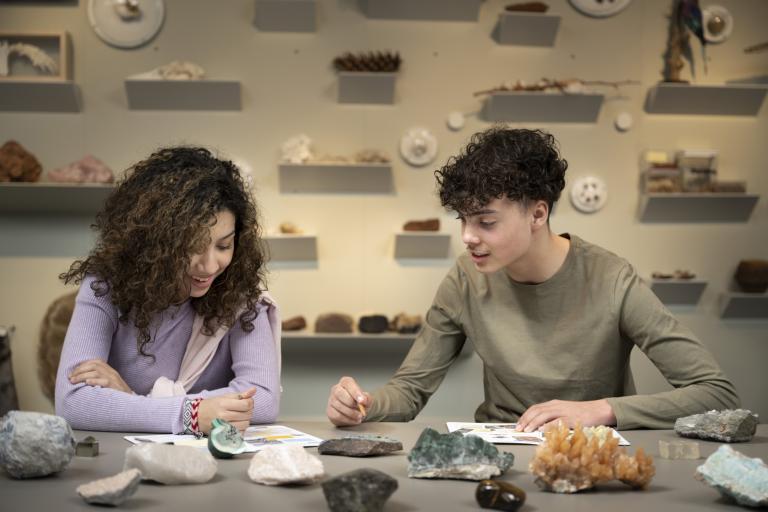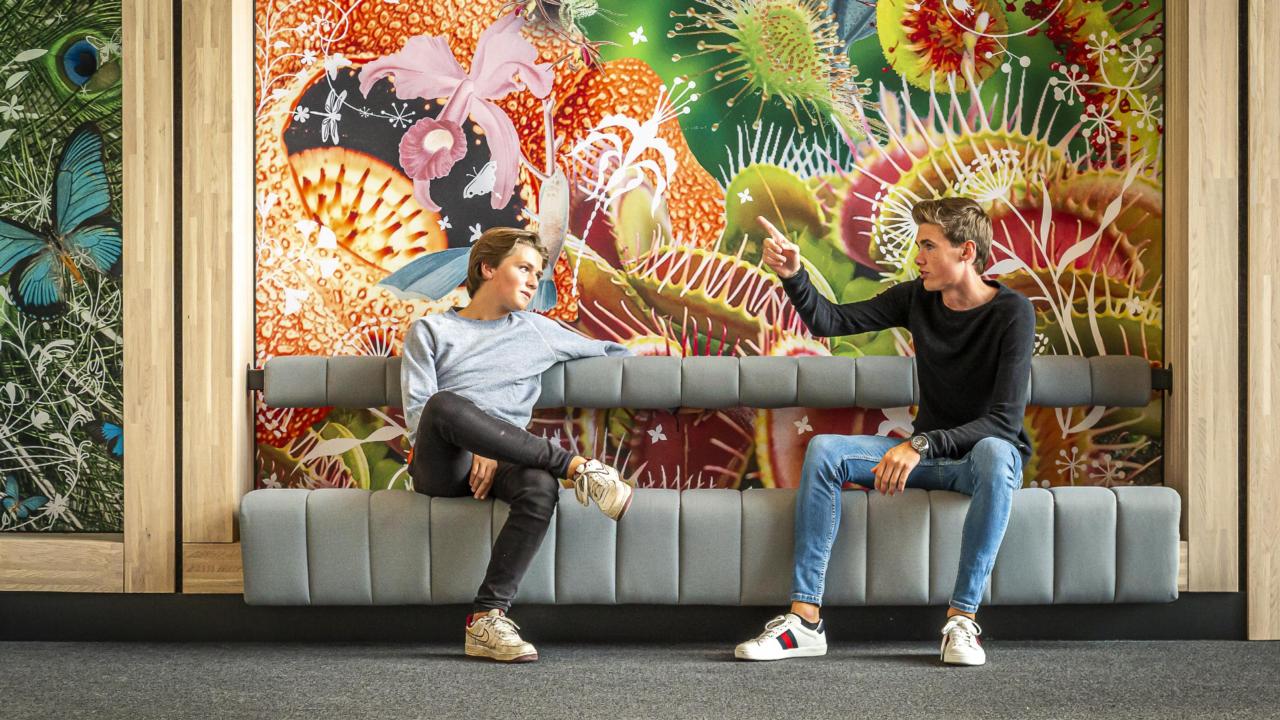
Become a rock, take a journey through the rock cycle and discover how rocks can change. As you do, you'll examine the coolest igneous, sedimentary and metamorphic rocks and choose the most dazzling mineral. Who will find the meteorite? Look for answers to earth scientists’ questions in the exhibitions and be astonished by prize specimens including a tourmaline in quartz and Trix the T. rex. Have you learned enough to beat the clock and assign the rocks to the places where they formed? In that case: let’s rock!
Everything you need to knowin a row
- Workshop
- Target group: Senior general secondary education & pre-university education, years 4-6 (ages 15-18)
- Length: 120 minutes
- Number of pupils: at least 15, but no more than 36
- Areas: “Earth” and “Dino Age” galleries, “Present” workshop area
- The school will supply: 1 supervisor per group
- Naturalis will supply: 2 educational assistants
- Objective: Pupils will discover the different kinds of rock that exist and how these are categorized into groups. They will learn how every type of rock can change into another, and how long this can take.
- Keywords: rock cycle, igneous rock, sedimentary rock, metamorphic rock, minerals and earth science.
Course of the programat the museum
The workshop consists of five parts. The schedule given below is an indication only.
0-20 minutes: “Present” workshop area
Free time to look around and introduction with presentation.
20-50 minutes: “Present” workshop area
Pupils play a game that lets them experience different routes through the rock cycle. For example, they will move from a table featuring igneous rock to one with sedimentary rock and finally to the metamorphic rock. By carrying out assignments, they’ll learn about many different kinds of rocks, minerals and sediments. The pupils will make notes in their field journals. With a bit of luck, they will find the meteorite!
50-85 minutes: Earth, Dino Era
Video clips give an impression of the types of work earth scientists do. In the “Earth” and “Dino Era” galleries, pupils will look for answers to their questions, for instance: “What does igneous rock in Hawaii look like?” and “What mineral is both beautiful and useful?” They will also have time to admire highlights from the geological collection.
85-105 minutes: “Present” workshop area
Each team will have a box of rocks to arrange on a large poster depicting mountain and coastal landscapes. The pupils will arrange the rocks according to the rock cycle. Where is granite formed and where should the pupils place the sedimentary rock with fossils in it?
105-120 minutes: “Present” workshop area
Brief presentation on minerals and the powers that are often attributed to minerals. To conclude, one of your pupils will have a chance to crack open a geode. Will there be beautiful crystals inside?
Booking infoprepare your visit
Everything you need to know about practical matters such as parking, lockers and house rules.
